Large Lever Drag
MAINTENANCE IS KEY TO REEL PERFORMANCE
With winter having well and truly arrived, so too have the bluefin! While the fair-weather fishermen have put their rods and reels away for the winter, the brave and adventurous ‘Reel Men’ will be heading off to the east coast in search of the elusive southern bluefin tuna. By James Gibbons
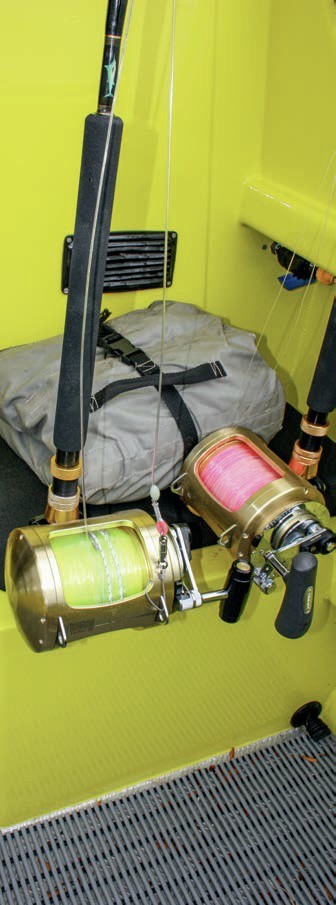
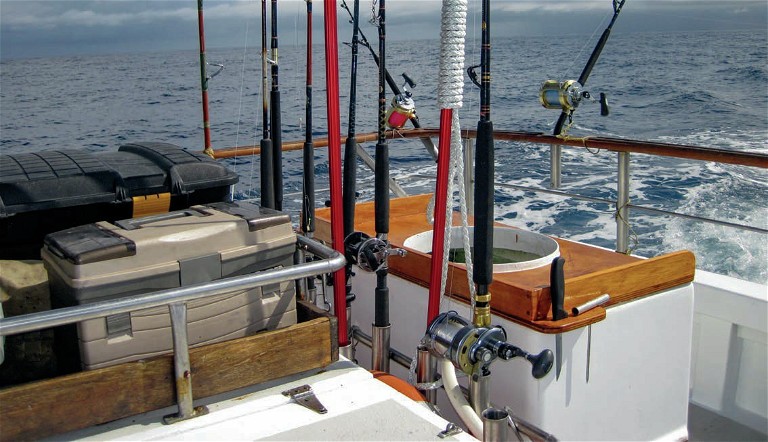
Lever drag reels used for trolling have one of the toughest lives any reel can have.
They’re constantly in the gunwale, with saltwater splashing over them and the sun beating down on them, and it’s often hours before they get a fresh water clean. Then there is the pressure on internal components when you’re hooked to a fish!
While these reels are built tough, they aren’t invincible. That is why keeping up with general maintenance in between services is crucial. With this in mind, I’m going to give you some essential tips to look after your large lever drag reels, using the Deuthlon Starter Kit.
For large lever drag reels, the Deuthlon cast lube, ceramic, and high-speed bearing oil provided in the Deuthlon Starter Kit can be used to maintain the following parts. Deuthlon does a generic reel lube which can also be used for the following areas at a great price point:
• Handle
• Drag Clicker
• Two Speed Mechanism
• Strike Stopper
Deuthlon Semi-fluid Grease can be used in the following areas:
• Handle
• Reel Seat
• Base of the spool before spooling
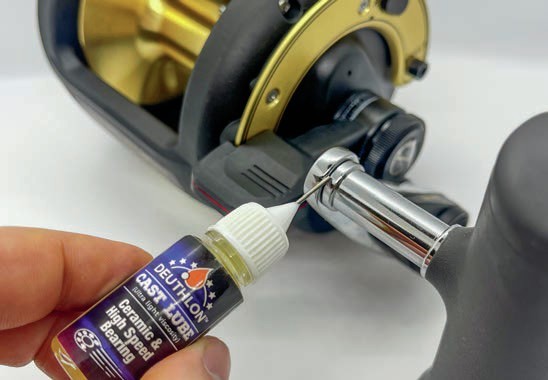
Step 1: Apply a couple of drops of Deuthlon Oil at the base of the handle shaft and handle knob; turn the handle knob to get the oil seeping into it the required space. These reels do not have bearings in the handle but require lubrication to prevent saltwater intrusion, which causes corrosion and seizing. After oiling for better protection, you can mix a small amount of Deuthlon Semi-fluid Grease and Deuthlon Oil to apply to the opening between the handle and shaft. This will act as a further barrier to prevent saltwater ingress.
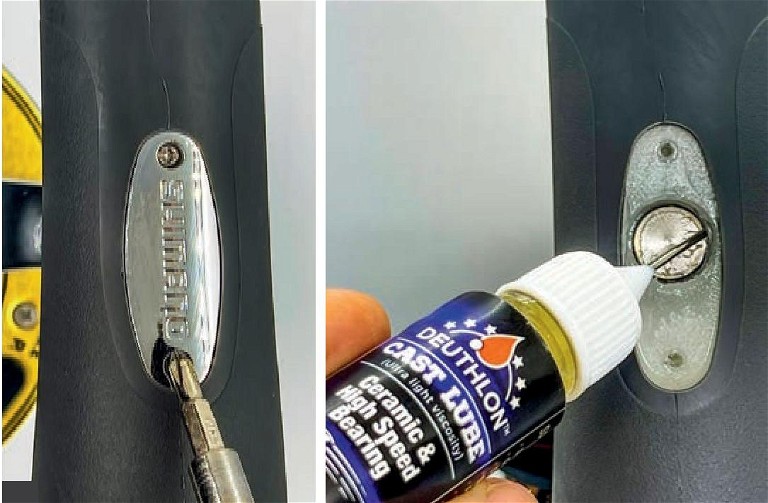
Step 2: Remove the two screws covering the handle cap with a small screwdriver. Apply a couple of drops of oil between the handle knob and handle shaft, and turn the handle knob. You can then use a small amount of the Deuthlon Semi-fluid grease to seal this access point. This is an excellent light grease that will mix with the oil over time and seep further down the handle shaft without causing the handle to gum up and become tight to turn. When replacing the cap and screwing in place, do not over-tighten screws.
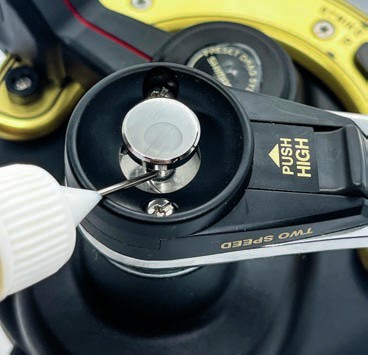
Step 3: If your reel has a two-speed function, you can apply a couple of drops to the twospeed pin and plate. Clicking it in and out of gear will help seep the oil in between the plates if you wish to take this apart on such reels as the Shimano TLD and Tiagras to apply a coat of light grease.
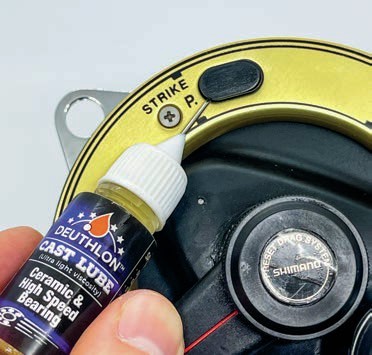
Step 4: A point often missed when maintaining a large lever drag is the lever stop points. On this Shimano TLD50A shown, there is one at the free spool and one at strike. Saltwater can get into these points and then dry, causing it to be tough to press in. Apply a few drops around the edge of the buttons and press a few times to seep in.
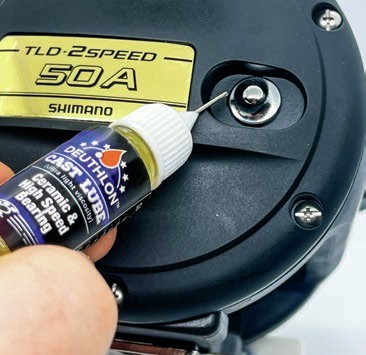
Step 5: Opposite the handle side of your reel, you’ll find your clicker mechanism. Apply a couple of drops around the switch and slide back and forth. This will ensure it is easy to slide in future and prevent saltwater from penetrating and then drying out, causing a seized solid clicker.
Handy Tips:
#1 A coat of Deuthlon Semi-fluid grease can be applied to the base of the spool before spooling with line. This helps prevent corrosion when saltwater eventually seeps down through the line/side of the spool and sits for an extended period. This is more critical for people using these reels for deep drops, as a more significant amount of wet line is rewound onto the spool. Run warm (not cold) water over your spool to help break down any salt on your line. #2 I learnt the following trick from Tony Orton some years ago (he has a great video of it on his Journey of a Fisherman site). Apply a coating of grease (in this case Deuthlon Semifluid Grease) on your reel seat and rod, then place a greased rectangle section of anti-slip matting in between the two. This matting is readily available at most marine shops, commonly used on dashboards and tables.
This helps to prevent your reel from seizing solid onto your rod. How often do you remove your game reels from the rods? If your like me, it’s only when getting it serviced! That’s a lot of time for saltwater to cause damage. By doing this trick, it makes removal a breeze!
Doing these simple steps often can be the difference between a straightforward service and a costly repair bill. Buying the Deuthlon Starter Kit is a small price to pay to increase the longevity of your hard-earned fishing gear.